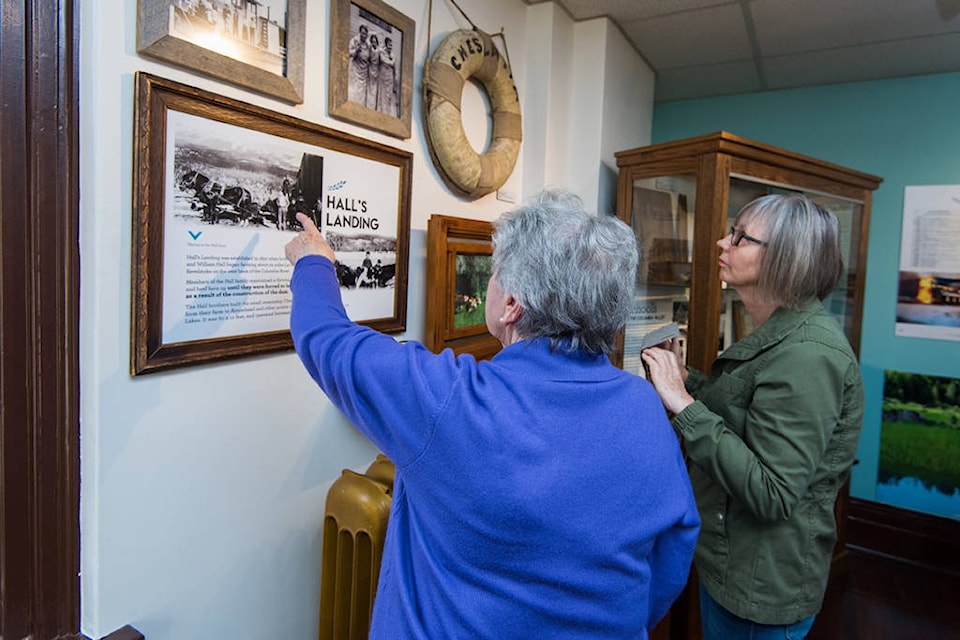Revelstoke Museum and Archives opened a new exhibition on Oct. 18, 2018 with more than 75 people in attendance.
Stories Beneath the Surface explores life in the Columbia valley between Revelstoke and the Upper Arrow Lake prior to the flooding of the region by the Hugh Keenleyside Dam at Castlegar 50 years ago.
Travelers waiting at the Shelter Bay ferry terminal on Highway 23 South can look across the lake to the former location of the once-thriving community of Arrowhead.
It is difficult to imagine that the area was once home to several hundred people, and that it served as the terminal for the Canadian Pacific Railway’s fleet of steamships as they connected with the train from Revelstoke.
Stories Beneath the Surface looks at the history of the valley and the way of life that it sustained. The communities of Arrowhead, Beaton, Sidmouth, Twelve Mile, and Mount Cartier are all featured, with photographs, artifacts and information about each of them.
Agriculture was an important aspect of life in the valley, with close to 200 farms once operating between Revelstoke and Beaton. The majority of the farms were family farms, providing fruit, vegetables, meat, and dairy products, with a little extra to sell, but there were also several large farm operations in the region, mostly dairy, cattle, and pig ranches.
The exhibition talks about the displacement of the residents and the loss of agriculture in the region.
Three interviews with former residents of the valley were filmed, and these are available for viewing at a multi-media station. Their stories are compelling, as the residents speak about their lives, and about the loss of their farms and their way of life.
One former resident, now in his 90s, speaks about the day that they had to burn the buildings built by his father when they moved to Sidmouth to escape the drought of the prairies in the 1930s. The media station also includes videos about the SS Minto and the Columbia River Treaty.
The exhibition features a touch-screen display with an interactive map where visitors can dive in and explore the rich history of the valley before and after flooding.
This map is also available on the museum website at www.revelstokemuseum.ca It is currently on the museum home-page under the title Revelstoke Reach Map Project.
Stories Beneath the Surface concludes with a panel about the modernization of the Columbia River Treaty that is currently underway. The negotiators are attempting to engage the public in discussions about the valley, a process that didn’t happen during the original creation of the treaty in the 1960s.
